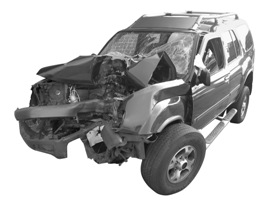 The crash-proof car is a step closer to reality with the launch of technology that enables a vehicle to drive itself. German company Ibeo has developed a system that uses lasers mounted at the front and rear of a car to scan for obstacles.
The crash-proof car is a step closer to reality with the launch of technology that enables a vehicle to drive itself. German company Ibeo has developed a system that uses lasers mounted at the front and rear of a car to scan for obstacles.
The crash-proof technology was one of the developments discussed at the Intelligent Transport Systems Congress in Stockholm this week.
A common theme running through the Congress was the likelihood that cars would soon be able to communicate with each other to share information on congestion, road hazards and even local amenities.
The same technology is able to track the location, speed and direction of travel of every vehicle and is a pre-cursor to pan-European road-user charging.
European Union funding worth £36m is helping develop the technology to reduce road traffic collisions, congestion and carbon emissions and could be installed in all new cars by 2013.
How does car tracking work?
Cooperative Vehicle-Infrastructure Systems (CVIS) could be described as air traffic control for the roads. It uses mobile phone, microwave and infrared technology to allow cars to communicate with each other and a central control centre. It promises to make car journeys safer, quicker and more fuel efficient, but crucially it paves the way for road-user charging and even ‘crash-proof’ cars.
A spokesperson for the Environmental Transport Association (ETA) said: “People will worry that the system heralds the arrival of Big Brother, but our mobile phone handsets already double as a highly-effective means of tracking our movements – everyone agrees that Britain needs a safe, reliable and high-quality transport system and technology that will reduce emissions, beat congestion and ultimately result in cars that drive themselves will feel no more an invasion of our privacy than the ability to send a text.”
0 Comments View now